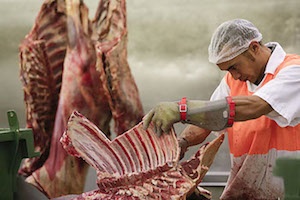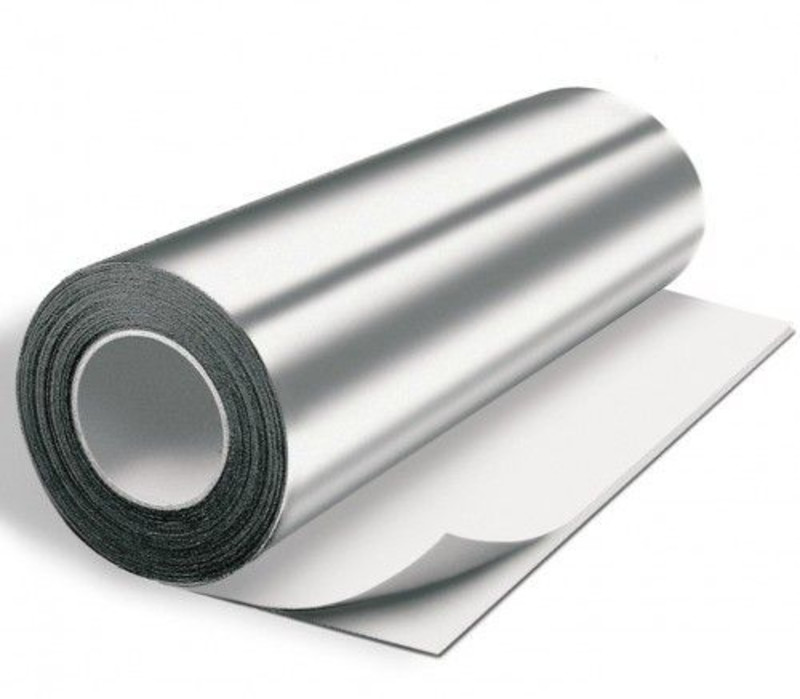Chickens are no longer needed: what kind of food is humanity being transferred to

Test-tube products have every chance of saving humanity from hunger and becoming a mass alternative to the usual MEAT. Billions of dollars have been invested in this, and it is likely that in a decade we will have a choice between a regular and non-traditional burger - and who knows which one will taste better.
British politician Winston Churchill said in 1932 that in the future we would avoid the absurdity of raising a whole chicken to eat only its breast or wing. Humanity will reproduce these parts separately in a suitable environment.
The future has arrived. Mankind has learned to grow meat in a test tube. Learned to produce animal protein from fly larvae and other insects. Even edible food packaging is already a reality.
But why do we need all this, if the grocery chains are already overflowing with soy meat, “lean” sausages and sausages, 45% consisting of emulsion-waste of meat production.
Is there a future for traditional food producers and how will world food sources change in the next decade? Foodtech industry experts tried to answer these and other questions at the Deep Food Tech professional conference.
THE PLANET WILL NOT FEED EVERYONE
About 8 billion people live on our planet today. According to UN forecasts, by 2050 their number will grow to 10 billion. And to feed everyone, you have to double your food production. However, already now we use 60% more resources than we can produce. At the same time, a third of all food produced in the world is thrown away.
Annually, 70% of fresh water is consumed by agriculture, and livestock is responsible for 14% of climate change on the planet, which, according to the UN, is more than the combined impact of all global transport.
For years, scientists around the world have been puzzling over how not to leave some people hungry in the future and at the same time not destroy the planet with greenhouse waste. And it seems that they are doing it for good reason - billions of dollars of investments in the industry and the growth of adherents of reasonable consumption are proof of this.
ARTIFICIAL MEAT - IS IT DELICIOUS?
Meat is essentially a mixture of fats, amino acids, various minerals and water. Similar components are found in plants. However, the production of meat involves costs that we do not even think about.
“We need to grow a huge amount of grain, send the grain for processing and make feed out of it. After that, the feed will go to the farm, where it is fed to animals. The animals are then sent to slaughterhouses, which also require resources to function. If you look at the entire production chain, it is easy to understand that this method is inefficient and very costly,” says Good Food Institute co-founder and CEO Bruce Friedrich.
The most efficient animal in terms of the ratio of the cost of its maintenance and the resulting meat is chicken. And despite the fact that the ratio of calories burned to those received from chicken is 9: 1. That is, you need to feed the chicken 9 calories to get one. In a cow, this ratio is 40:1, the expert noted.
But it is possible to create a product of plant origin that will bring people the same benefits as meat, and the same emotional sensations.
For people who want real meat, cell culture can be used.
Scientists take cells from animals and turn them into muscle tissue, and then supply it with nutrients. Next, a piece of real meat is introduced, around which muscle fibers begin to grow. After a few weeks, the piece of meat can be cooked and eaten.
“Artificial meat is delicious,” said Andrey Zyuzin, managing partner of Fuel For Growth venture fund. If you are not a specialist and not a big gourmet, and the product is prepared by a good chef, then you will not feel the difference, he added.
Artificial cellular or vegetable meat can replace a real animal, just as renewable energy sources - wind, sun, water - replace oil and gas for us, Friedrich noted.
Today, "ethical" meat costs much more than real meat. The first artificial pork burger cost 17 million rubles, but accounting promises that in 5-10 years pseudo meat will be sold in stores at a reasonable price. Zyuzin believes that in the future a kilogram of artificial meat will cost less than a kilogram of beef. It's all about the scale of production, which is only gaining momentum.
INSECT PROTEIN
To a large extent, the protein will be contained in the products familiar to us: in meat, eggs and cereals. There are also many alternative proteins, of which soy and peas are leading. But every year the need for protein is growing, which is confirmed by investments in this industry - only in 2021 they amounted to $ 8 billion. According to experts, the market will scale after 2025.
Scientists from different countries are looking for new sources of protein that are not dangerous to the environment. For example, the Israeli company Flying SpArk has learned how to extract protein from the larvae of the Asian fruit fly, a pest for many cultivated plants. This insect increases in 7 days by 250 times due to its properties - 70% of protein and 12% of minerals.
“We collect the larvae, extract the protein mass. We work in the field of food, animal feed, cosmetics. In the food industry, we are focused on all kinds of alternatives – for meat, for poultry, for baking, for various snacks and drinks,” said Eran Gronix, Founder and CEO of Flying SpArk.
But the Russian company Zooprotein has learned how to process organic agricultural waste with fly larvae, obtaining protein from them for animals, poultry and fish. In their technology, they use the larvae of the black lion, which is able to increase 15 thousand times.
According to Mikhail Zhuravlev, Deputy Business Development Officer of the company, feed protein from fly larvae is the best replacement for traditional feed proteins. The product has a balanced amino acid composition, which contributes to the rapid weight gain of the animal without harm to it.
HUNGER DOES NOT THREATEN US
If everything goes as manufacturers and investors have planned, it is quite possible that in a couple of years we will be consuming products that include protein made from insects, Zyuzin noted.
According to him, this will happen very simply and even imperceptibly for consumers. 2 billion people already eat it and don't feel any discomfort from it. “This protein has no taste or smell, just a white powder. If you remove the picture of production - it is quite acceptable. Just like people do not see what is happening in slaughterhouses,” the expert added.
Simply put, writes PRIME, if we remove the psychological component, the question of the mass consumption of artificial meat rests only on its price. If the cost of meat from a test tube is equal to the price of familiar meat, which product will you choose?
Read together with it:
- О самых распространенных причинах пожаров рассказали в МЧС2 октября, Минск. О самых распространенных причинах пожаров рассказал начальник главного управления надзора и профилактики МЧС Дмитрий Турчин на "Предупреждение чрезвычайных ситуаций в осенне-зимний период. Профилактика пожаров и гибели людей от них", которая прошла в БЕЛТА. "В республике наблюдается рост количества пожаров на 7,7%, и на 1......
- В Раменском выведена новая порода кроликов — Великородская белаяЭто значимое событие обозначает первую отечественную породу, разработанную для племенного и промышленного производства за последние 60 лет. Глава Раменского муниципального округа Эдуард Малышев посетил институт, где директор, доктор биологических наук Глеб Косовский, провел ознакомительную экскурсию для почетных гостей. Институт служит научно-методической базой для разработки технологий в области ...
- Боливия экспортирует говядину на сумму 797 миллионов долларов и вводит новые цифровые сертификаты для внешней торговлиЭкспорт говядины из Боливии в период с 2021 по 2025 год достиг 797 миллионов долларов. Китай является основным рынком сбыта этого мяса, на который приходится 74% продаж, сообщила Карина Серрудо, генеральный директор Национального таможенного управления. Параллельно с этим ведомство включило сертификат безопасности экспортных пищевых продуктов для говядины в систему «Единое окно для внешней торговл...
- Премьер Финляндии призвал ЕС быть оборонным союзом, а не торговым блокомЧтобы избежать потенциальной угрозы от «враждебных государств», Евросоюз должен укреплять оборону и сотрудничать в данной сфере, заявил финский премьер Орпо. Он отметил, что это не будет значить, что Брюссель «вытесняет» НАТО Петтери Орпо Евросоюз должен взять на себя «беспрецедентные полномочия», чтобы защититься от «растущих угроз». Об этом сказал премьер-министр Финляндии Петтери Орпо, сообщает...
- "Cardboard Superpower." What is Poland prepared to take into 2026?Photo: Unsplash The Polish government has submitted its draft 2026 budget to the Sejm. In short, the hole in the Polish budget is growing even wider, and the national debt is on the verge of skyrocketing. Meanwhile, military spending is breaking records, cementing Poland's status as NATO's leader in defense spending as a percentage of GDP. However, the value of such leadership is questionable. Or ...
- Директор энгельсского интерната осуждён за незаконные закупки мяса на сумму почти 12 миллионов рублейВ 2022 году учреждение заключило 25 контрактов с индивидуальным предпринимателем, не проводя торги, что нарушало закон. Арбитражный суд обязал предпринимателя вернуть в бюджет более 10 миллионов рублей. Следует отметить, что это решение касается множества контрактов, которые были разделены искусственно, создавая условия для обхода закона.......




























































